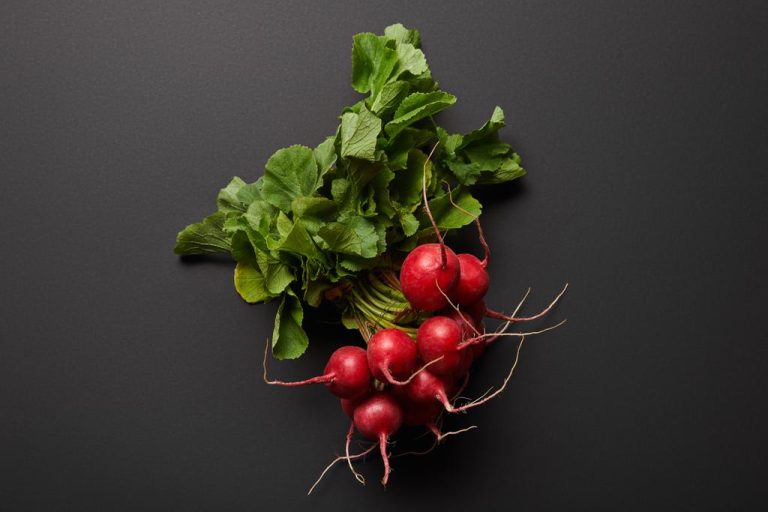Crunchy, healthy, and simply delicious: radishes are used to beautify Japanese and Chinese gardens as ornamental plants. Nowadays, however, we not only enjoy their appearance but also their unique taste. It is reminiscent of radish but is much finer and pleasantly hot. And best of all: You can buy radishes fresh all year round, as they also thrive well in greenhouse cultivation. One more reason to present you with ten radish recipes that are simply brilliant!
1. Wholemeal Bun with Radish Cottage Cheese and Pear
Oh, that looks delicious! These crunchy wholemeal rolls with radish cottage cheese and pear are the ideal start to the day and are rich in many valuable vitamins and nutrients. And best of all, you can easily prepare the dish at home and enjoy it in the office. We wish you a good appetite!

2. Radish smoothie
Attention smoothie fans: It doesn’t always have to be the green version. This buttermilk drink with garden cress and lemon also tastes great! Ice cubes give the radish smoothie a special freshness, so you can enjoy the drink even when the temperature is warm. Let yourself be surprised by the spicy aroma. We are sure: you will love the smoothie!
3. Potato salad with asparagus, radishes, and peas
Now it’s getting colorful! This potato salad brings variety to the table and is not very healthy with asparagus, radishes, and peas. Among other things, the dish provides the body with a good amount of proteins.
4. Potato and radish salad
Rounded shapes, hot taste: radishes also cut a fine figure in potato salad! The plants contain mustard oil, which provides a wonderfully spicy aroma and also spices up salads. Incidentally, mustard oil has an antibacterial effect and can counteract gastrointestinal upsets. So get to the veggies!
5. Radish Potato Soup
The highlight of this soup? Quite simply: radish leaves are processed here, which ensures a unique taste. Do not you believe? Then give it a try and prepare the soup yourself. We promise you: It is rich in valuable nutrients and a taste experience that is second to none.
6. Asparagus Salad with Raspberry Dressing
Colorful and tasty, white asparagus is combined with baby spinach, radishes, cress, and pistachio nuts – fresh raspberries provide the fruity extra. And best of all, this salad is guaranteed not to get on your hips, because one serving has only 165 calories.
7. Crisps with cucumber curd
Crispy and crunchy at the same time: This crispbread with cucumber quark and radishes is just right for the calorie-conscious and anyone who wants to eat a healthy and balanced diet. The hearty snack can be prepared in no time and, thanks to the radishes, is bursting with important minerals such as potassium, calcium and iron, and vitamins A, B1, B2, and C.
8. Carrot and radish salad with goat cheese
For the slim figure, there is little that is as cheap and at the same time as delicious as radishes. And the vegetables are also excellent in this wonderful carrot salad with goat cheese. By the way: Radishes should not be left in the fridge for longer than two to three days. So it’s best to eat the red balls as soon as possible.
9. Soup with shiitake, spring onions, and radishes

Soup with shiitake, spring onions, and radishes – does that taste good? Yes! And how… With this dish, a touch of Asia lands on your plate. The soup warms you up wonderfully on cool, rainy days and is also ideal as a starter at a dinner with friends or family. The radishes also provide the necessary pep for this dish!
10. Glazed radishes with leaves in the sauce
Visually stunning – and also great in terms of taste: These glazed radishes are a real eye-catcher and provide a real wow effect on the plate. How about relying on this culinary masterpiece at the next party and presenting glazed radishes to your guests? In any case, it’s worth a try.







